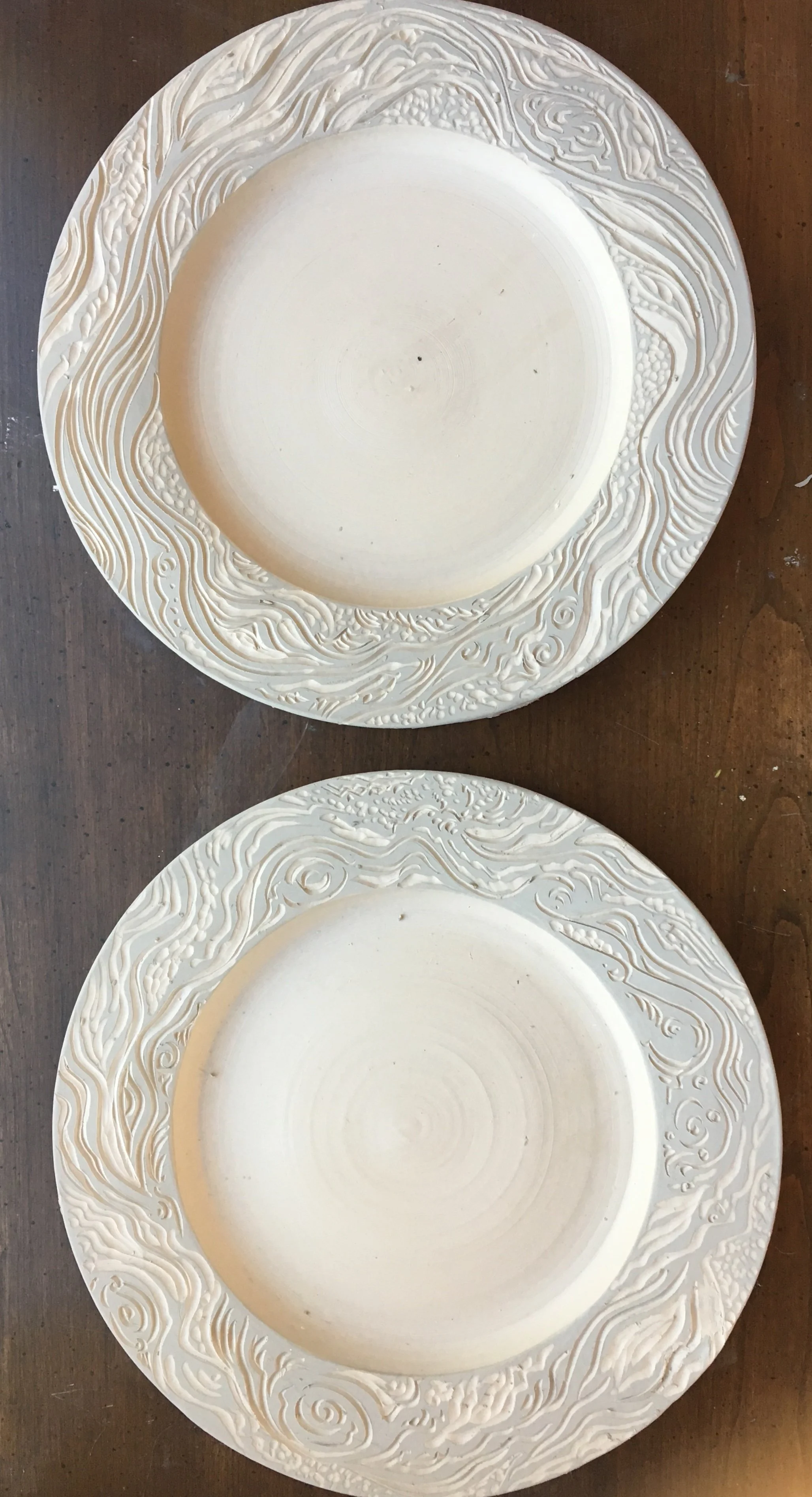Simply put, plates are one of the hardest forms to throw. They crack if your clay isn’t strong enough to withstand being long and thin, so save yourself a lot of frustration by using stoneware for plates. They are stronger if you make them a bit concave, and they will often punish you with cracks if you make them flat or convex. They want to dry slowly (or they will crack—see the theme here?), so keep them loosely covered and forget about them for longer than you think.
Once I figured out what clay stays strong as greenware, I had a lot more success. Then I tried to defy gravity by making plates with wide rims that I could carve with beautiful designs. They sagged at cone 10 and wouldn’t stack properly as a result. So I tried again by making the rims more upright and letting them dry more than I thought before putting slip or underglaze on them for sgraffito work. I have a lot of beautiful plates from those days, but none stack properly.
In the end, I gave some clay to my professor and hired him to make a set of 8 greenware plates for me that would stack properly so I could just focus on carving and glazing. I love the results. I still make plates for the fun of it now that I worked out all the kinks, but I leave the stacking sets to the pros.




